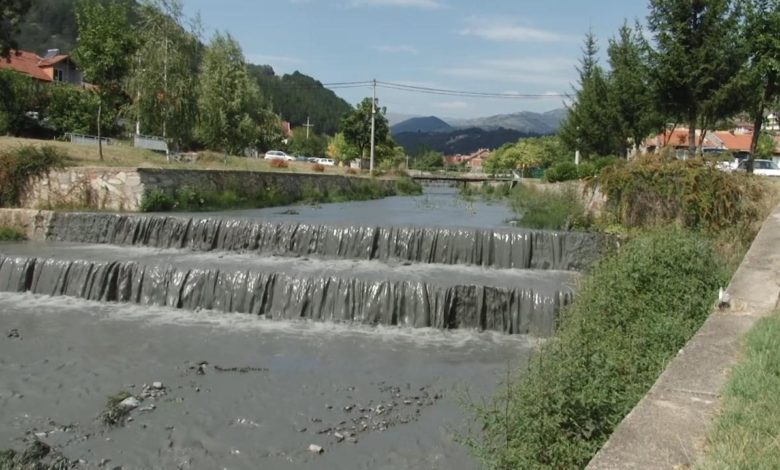Is there a connection between climate change and tailings dam failures? S&P Global looked into this question recently, and found that as water scarcity and flooding become more erratic and severe with climate change, tailings dams become more dangerous. As we noted in the article: “There are still thousands of risky dams out there that are susceptible to climate change, earthquakes and other types of failure. So we’re probably going to see more failures.”

It took less than two weeks for this prediction to come true. On September 14th, a tailings dam at Central Asia Metals’ lead-zinc Sasa mine in Kamenicka Reka, Macedonia leaked about 8,000 cubic meters of mining waste into a local river. The exact reason for the spill still seems unclear, but Macedonian press is citing a defect in the right side of one of their tailings storage facilities.
The video above shows tailings flowing down a local river, the Kamenicka, through the nearby town. Environmental activists from the NGO Eko-Život pointed out that the Kamenicka river ultimately flows into the Vardar River, which affects the ecosystems of five municipalities. They contend that the damage from the tailings spill, “долг период ќе е присутна” [will be present for a long time]. Professor Trajche Stafilov from the Faculty of Natural Sciences and Mathematics at Ss. Cyril and Methodius University in Skopje pointed out that if the tailings end up in the surrounding soil, they will dry out over time, and their components could form a fine, toxic dust able to travel long distances.
According to public disclosure data reported to investors at the Church of England, the failed facility is 61m tall and stores nearly three million cubic meters of waste. The disclosure data lists the dam as a “Very High” consequence of failure classification, meaning if the structure were to collapse entirely it could potentially kill up to 100 people and cause significant environmental damage.
This is not the first time this mine has had a tailings spill. In 2003, when the mine was state owned, two tailings dams, “collapsed and caused an intensive flow through the Kamenica River valley into Lake Kalimanci, with around 70,000 to 100,000 m3 of tailing material discharged into the surrounding ecosystem.” A 2011 geochemical investigation of the dam collapse called it an “environmental disaster.” The study found heavy metals from the tailings in Lake Kalimanci and attributed them to the collapse of the dam eight years earlier. There have also been significant environmental issues caused by blowing dust from tailings storage facilities.
After a review of the recent spill, the State Inspectorate of Environment fined Central Asian Metals € 65,000 and the company has estimated around clean-up and repairs will cost $1.5M. Some investors have noted the spill could have negative implications for the company. For it’s part, Central Asia Metals pushed full speed ahead to resume stalled production by initiating efforts to clean the spill and hiring tailings consultant heavy-hitter Knight Piesold to make the necessary adjustments, “со цел да се осигури дека вакво нешто нема да се повтори” [in order to ensure that this does not happen again.]
But this will happen again. It may not happen at the Sasa mine, but with 21,000 tailings dams across the world and an incomplete registry of their stability and potential dangers, there will be more tailings dam failures moving forward. As we have seen time and time again, the mining industry cannot be left alone to regulate itself. We need comprehensive global tailings management standards that include rigorous safety controls, require consent and engagement from affected communities, and hold mining companies accountable for their actions. In June, Earthworks along with 150 communities, organizations and experts, put for 16 guidelines for responsible tailings management. Your organization can still endorse these guidelines, by signing-on here.
